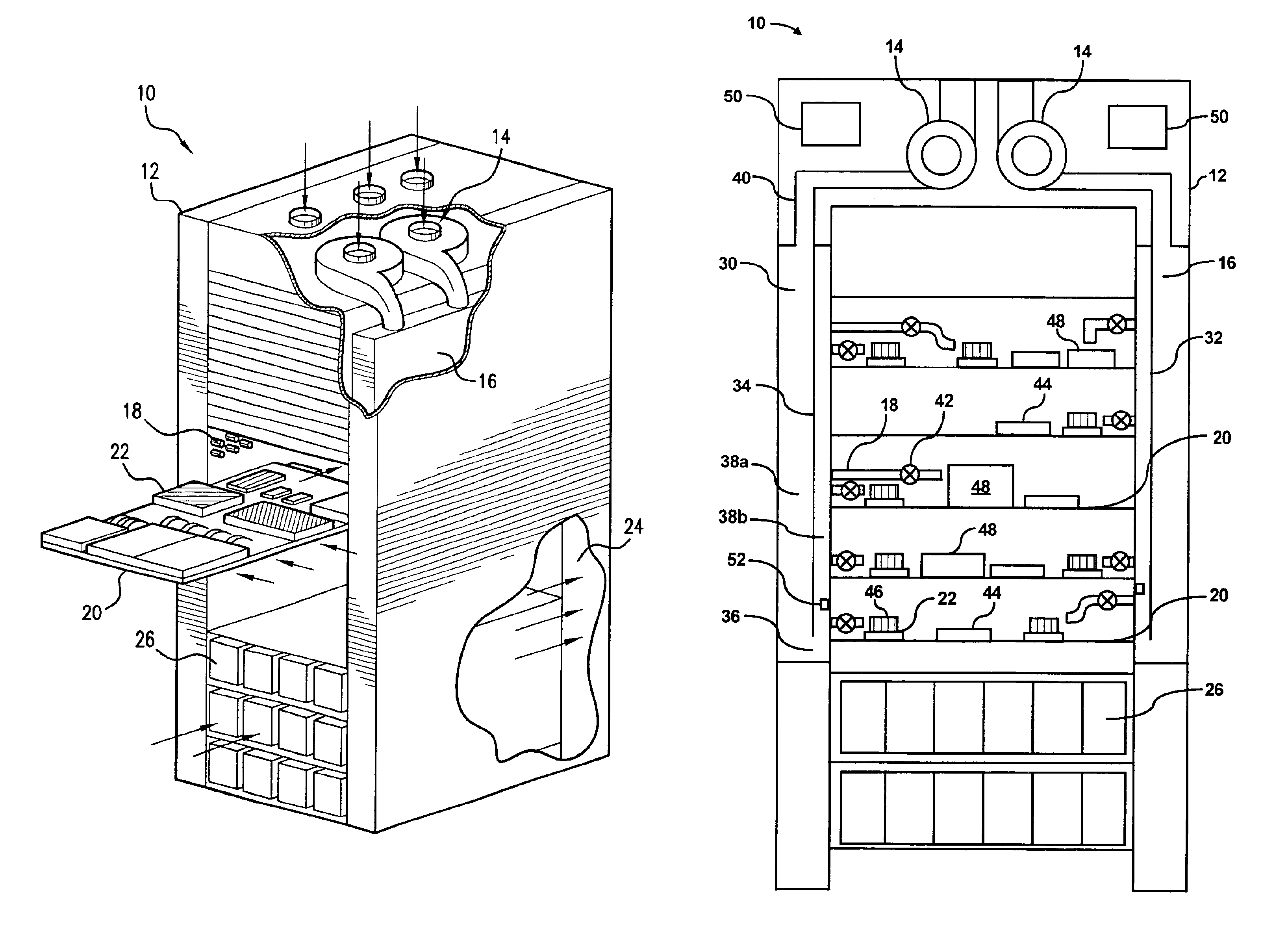Method and apparatus for individually cooling components of electronic systems
- Summary
- Abstract
- Description
- Claims
- Application Information
AI Technical Summary
Benefits of technology
Problems solved by technology
Method used
Image
Examples
first embodiment
The valve controller 304 is configured to receive the measured temperatures of a plurality of heat generating components, e.g., heat generating components 22, 48. In this regard, the controller 304 may comprise a microprocessor, a micro-controller, an application specific integrated circuit, ASIC and the like. The temperatures of the heat generating components may be measured by temperature sensors 306 and 308. Although FIG. 3 illustrates two temperature sensors 306 and 308, it should be understood that the number of temperature sensors is not critical to the operation of the invention. Instead, the cooling system 302 may include any reasonably suitable number of temperature sensors to thus measure the temperatures of any reasonably suitable number of heat generating components. According to a preferred embodiment, the number of temperature sensors and thus the temperature measurements of the number of heat generating components may be upgradable, e.g., scalable, to include any addi...
second embodiment
FIG. 4 shows a block diagram 400 of a second exemplary control scheme for a cooling system 402 according to the present invention. The elements illustrated in the block diagram 400 operate in substantially the same manner as those elements illustrated in the block diagram 300, except that the blower controller 414 is configured to operate independently of the valve controller 404. For example, the valve controller 404 operates in substantially the same manner as the valve controller 302. In this respect, only those elements in the block diagram 400 that differ from those elements in the block diagram 300 will be described hereinbelow. In this respect, interface electronics 420 may be configured to provide an interface between the valve controller 404 and the components for operating the control valves 410 and 412, e.g., a motor to control the opening in the valves, device for operating the pulsating valve (not shown), etc. In addition, interface electronics 422 may be configured to ...
PUM
 Login to view more
Login to view more Abstract
Description
Claims
Application Information
 Login to view more
Login to view more - R&D Engineer
- R&D Manager
- IP Professional
- Industry Leading Data Capabilities
- Powerful AI technology
- Patent DNA Extraction
Browse by: Latest US Patents, China's latest patents, Technical Efficacy Thesaurus, Application Domain, Technology Topic.
© 2024 PatSnap. All rights reserved.Legal|Privacy policy|Modern Slavery Act Transparency Statement|Sitemap



